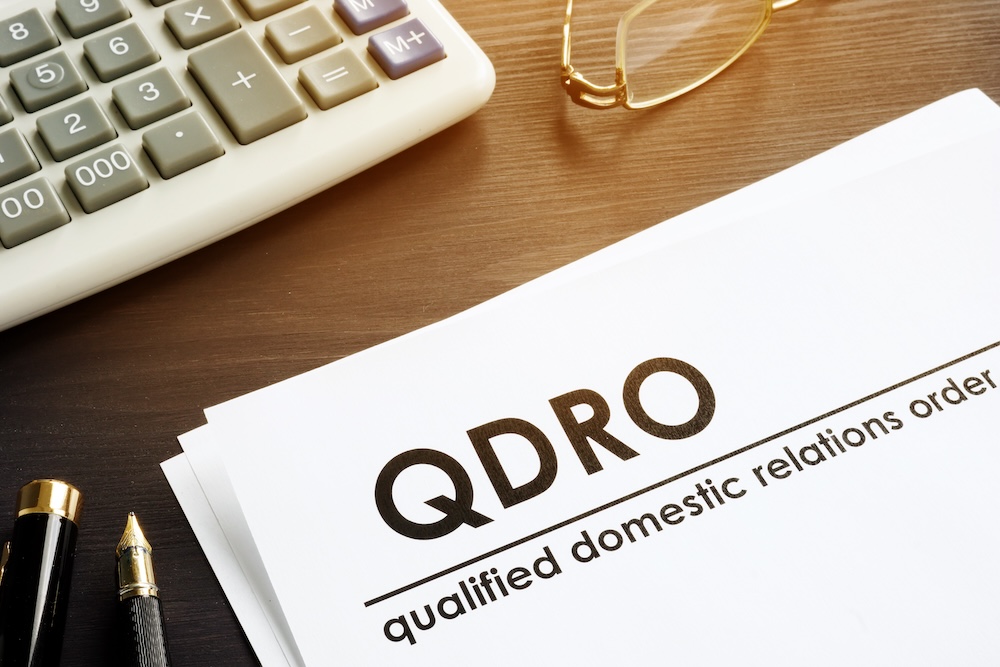What is a QDRO? When people with retirement plans get a divorce in Texas, they often assume their retirement plans are separate property, and they get to take their retirement savings with them. This is usually not the case. Because Texas is a community property state, the court can award part of one spouse’s retirement plan to the other spouse.
When this occurs, a special order – called a Qualified Domestic Relations Order, or QDRO for short – must be prepared for the judge’s signature. The order tells the retirement plan administrator how to divide the retirement plan between the two spouses.
While this may sound like a relatively straightforward process, it is anything but. Preparing a QDRO is complex and arduous, even for the most experienced family law attorneys. That’s why most attorneys outsource this time-consuming and complicated process to professionals specializing in this highly technical aspect of divorce.
Varghese Summersett is one of the few law firms in the state that handles QDROs. Led by attorney Wade Griffin and his legal assistant, Sarah, our QDRO team has decades of experience preparing and getting QDROs approved for clients and attorneys throughout the state.
What is a QDRO? QDRO Basics
In Texas, a QDRO is a legal mandate by a judge to divide a portion of an employee’s retirement, pension, or deferred compensation plan as part of a divorce settlement. It is a specific order, separate from the divorce decree, that orders the retirement plan administrator to cut out the non-participating spouse’s portion and assign it to a separate account for the spouse receiving the divided portion.
The purpose of a QDRO in Texas is to provide a legal mechanism for dividing retirement assets between spouses upon divorce without incurring penalties for early withdrawal from the retirement account. It outlines how the retirement assets will be split and ensures that the division is recognized by the plan administrator and distributed accordingly.
A QDRO can also be used to enforce child support payments or even designate a child or another dependent as a beneficiary to receive a portion of the retirement account’s assets.
Types of Retirement Plans Covered by QDROs
QDROs are applicable to a wide range of retirement plans, primarily those covered under the Employee Retirement Income Security Act of 1974(ERISA). These include, but are not limited to, the following types of plans:
- Defined Contribution Plans (401k), 403(b), 457
- Defined Benefit Plans (Pension)
- Thrift Saving Plans (TSP)
- Employee Stock Ownership Plans (ESOPs)
- Government (FERS) and Military Retirement Plans
It’s important to note that QDROs do not apply to Individual Retirement Accounts (IRAs). The division of these assets in a divorce is typically handled through a process outlined in the divorce decree and does not require a QDRO. However, it may require a process similar to a QDRO.
The QDRO Process
Obtaining a QDRO is a multi-step process that involves determining retirement assets, drafting the document, seeking pre-approval from the plan administrator, and obtaining court approval. Every step is important to confirm the QDRO’s validity and enforceability. That’s why having an experienced QDRO attorney handle this process is so important. Here’s an overview of the process:
1. Determine the Portion of the Retirement Assets to Be Awarded
The first step involves a thorough analysis and determination of how the retirement assets will be divided between the two parties. This process includes evaluating the retirement plan and its assets, considering any pre-marital contributions or separate property claims, and understanding the tax implications of the division.
2. Draft the QDRO
Once the division of assets is determined, the next step is to draft the QDRO document. This step is intricate and requires understanding the specific requirements and rules of the retirement plan; using precise legal language to ensure the order is clear, comprehensive, and compliant with the plan’s guidelines and federal regulations; and including all required personal and financial information. The QDRO must also specify the exact amount or the method used for calculating the division of retirement benefit, which could be a fixed amount, a percentage of the account balance, or a formula based on the years of marriage during which the participant was a member of the plan.
3. Obtain Pre-Approval by the Plan Administrator
Before submitting the QDRO to the court for approval, it’s advisable to seek pre-approval from the plan administrator. This step involves submitting the drafted QDRO to the retirement plan’s administrator for review, ensuring the document meets all plan-specific requirements and federal laws to avoid rejection, and making any necessary revisions based on feedback from the plan administrator to expedite the final approval process.
4. Obtain Court Approval
After the QDRO is pre-approved by the retirement plan administrator, it must be submitted to the court for final approval. Once signed, establishes the QDRO as a legally binding document, making it enforceable and ensuring the division of retirement assets as specified in the order.
5. Submit to the Plan Administrator & Distribution of Assets
After the judge signs off on the QDRO, it is submitted to the retirement plan’s administrator. This official document serves as the legal directive for the plan administrator to comply with the court’s order regarding the division of the retirement plan assets. The distribution of assets to the alternate payee might be immediate, deferred until the participant retires, or based on another schedule as stipulated in the QDRO. The distribution method (lump sum, periodic payments, etc.) will also follow the QDRO’s terms and the plan’s rules.
Common QDRO Mistakes
As with any complicated legal process, mistakes and mishaps can occur. Here are the most common mistakes we see when others attempt to prepare and file QDROs.
Incomplete or Incorrect Information
Preparing a QDRO is a very involved process. One of the most common mistakes is submitting incomplete or inaccurate information. This can lead to:
- The rejection of the QDRO by the retirement plan administrator
- Delays in the processing of the QDRO
- Potential additional costs to correct the errors
- Misallocation of retirement assets
Failure to Obtain Pre-Approval from Plan Administrator
Another common error is failing to obtain pre-approval from the plan administrator. Pre-approval is important because it ensures that the QDRO meets the plan’s set requirements and qualifications. Neglecting this step can lead to complications, such as delays in finalizing the QDRO and unforeseen issues with the division of retirement benefits.
Not Considering All Retirement Assets
When you’re dealing with complex financial documents, it’s possible to overlook certain retirement assets. It’s imperative to carefully review all retirement assets to prevent the inadvertent omission of any retirement benefits that should be divided. Failure to do so could lead to an unjust settlement or potential legal disputes in the future.
Not Filing Quickly
A QDRO should be filed promptly during the divorce proceedings. Dividing retirement assets can be a complex process, and any delay can lead to complications such as legal disputes or loss of benefits. Obtaining a QDRO, from drafting to court approval, can take a few weeks to months, so it is recommended that you start the process early.
Helping Other Attorneys with QDROs
Drafting a QDRO can be a challenging and demanding process, even for the most experienced family law attorneys. Our firm takes the headache out of preparing a QDRO and getting it approved by the plan administrator.
Once the divorce case is settled or the judge has made a ruling, the attorney responsible for preparing the QDRO can provide a copy of the ruling to our law firm, along with a short information form (which can be accessed by clicking the button below.) We will prepare the QDRO, get it pre-approved with the plan administrator, and return it to the attorney. The attorney will simply enter the order, along with the divorce decree, and return a certified copy to us. We will then submit the QDRO to the plan administrator for final approval and asset distribution. The attorney will receive a copy of the approval documentation for his or her file.
That’s it. We do all the heavy lifting.





















